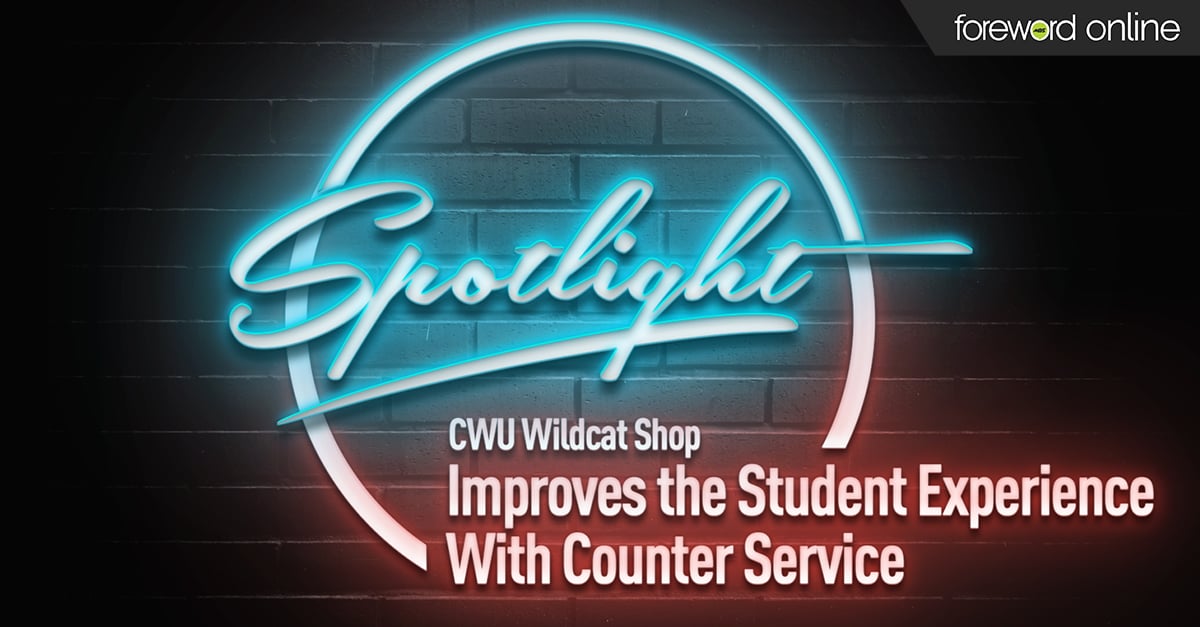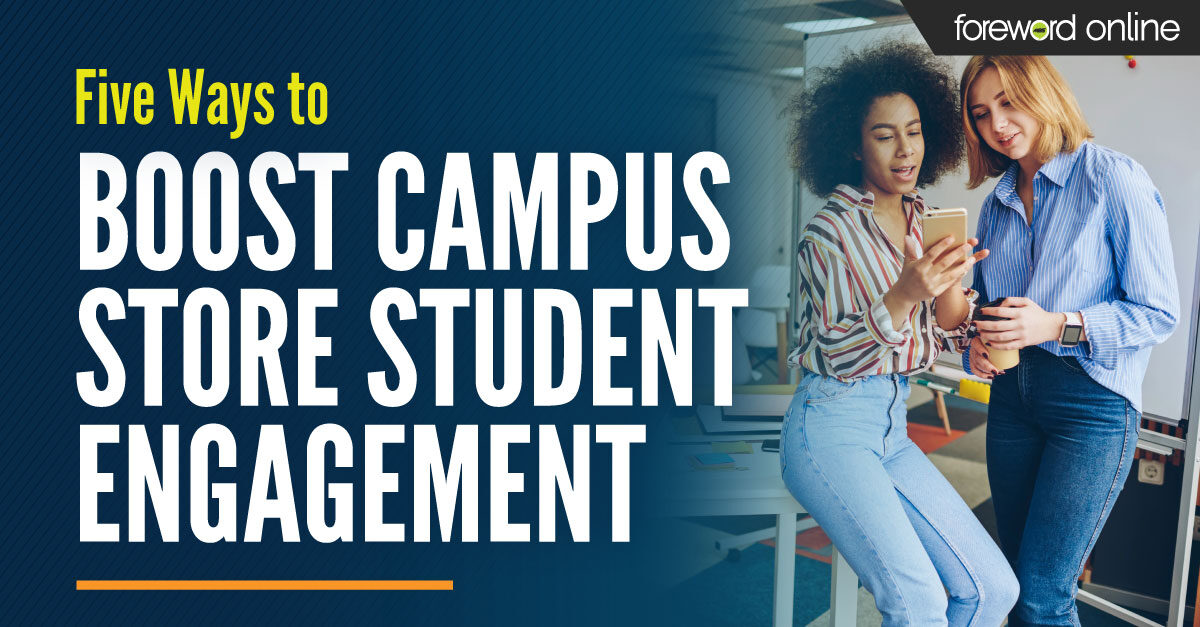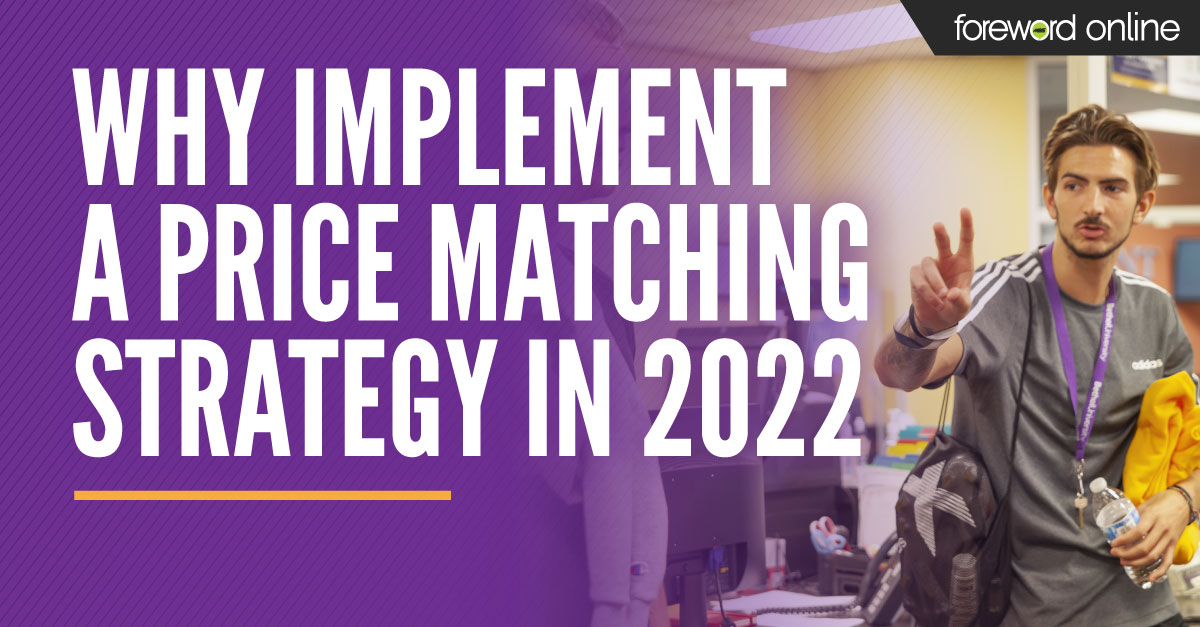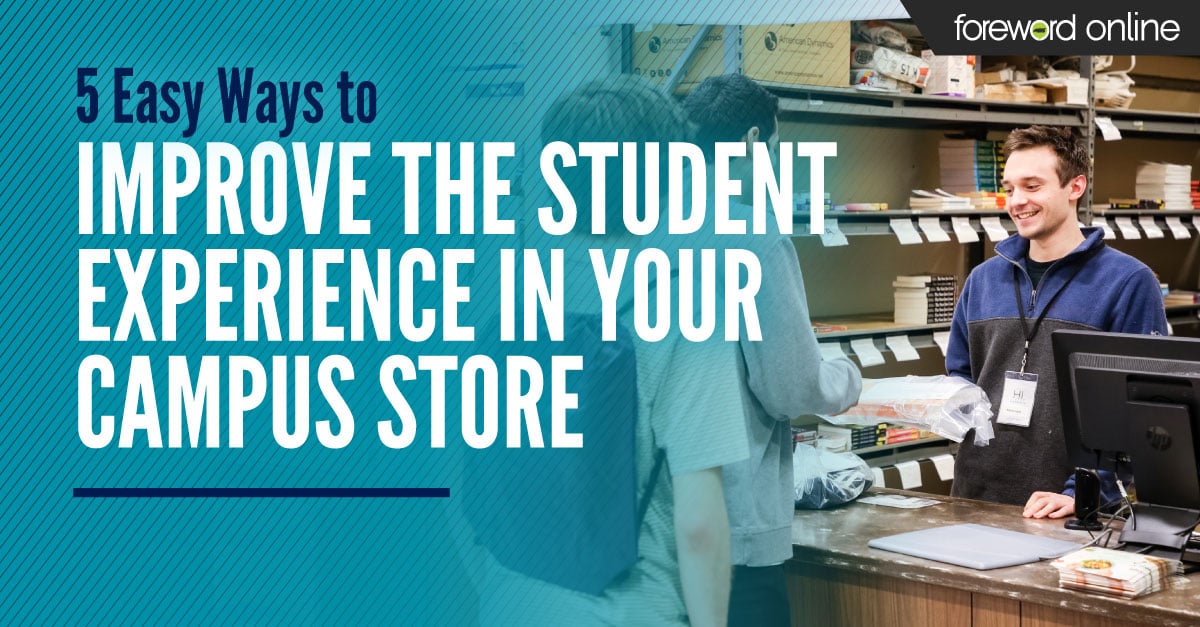Central Washington University Wildcat Shop noticed there was a problem with their student customer service during rush. Large crowds congested the aisles, and lines of students waiting for help made it difficult to maneuver through the stacks. Looking for ways to alleviate the problem, they switched to counter service.
 Now that the store has a streamlined system in place, students, faculty and staff have a positive experience during rush. Recently, we spoke with CWU Wildcat Shop Director Steven Wenger and Textbook Supervisor Sara Senter about offering textbook counter service in the college bookstore.
Now that the store has a streamlined system in place, students, faculty and staff have a positive experience during rush. Recently, we spoke with CWU Wildcat Shop Director Steven Wenger and Textbook Supervisor Sara Senter about offering textbook counter service in the college bookstore.
How did your store get started with counter service?
Steve: Sara is the one who came up with the thought of going to counter service. We spoke with several other stores that were doing counter service. Then we started in the summer of 2017 with going to counter service.
Sara: The line to ask questions had gotten very long, and when anyone in our textbook department walked into the stacks during rush, they were inundated with student questions for an hour or more. So, we talked about how we could improve the customer experience. We asked, “What we can do to serve our students better?” It really came down to needing to have that counter where we could talk to each student and help answer their questions in an organized way.
Tell me how counter service is set up in your store.
Sara: The way we set it up is we have a booklist printer where students can easily print out their booklist. Students scan their ID, and it pulls up their schedule with the books they need or any required materials, whether it is a GM item or a book. It prints out on a register receipt, and students check off the items they want before bringing it to the counter. If there is an eBook on their list, the booklist printer will print a barcode that can be scanned at the register.
When students bring their list to the counter, we give them a number. After that, they can go shopping or get in line to pay. We pull their books and meet them at the register. It’s really a painless student experience. Doing this our returns went down exponentially.
Steve: They are a third of what they used to be.
Sara: I think it really confirmed that students were confused about what they needed to buy.
Steve: Our staff is at the counter to help them if they have questions on anything. The speed of the booklist printers really keeps the process smooth. It is the same type of printer we use for our registers, but that printer is set up to work completely in sync with our POS and registration information. It prints out in a second. It’s that fast. It really is no longer than one second. You snap your fingers and it’s printed.
Sara: Before, a lot of student questions revolved around not knowing what books they needed or even how to find their list. We would spend a lot of time helping them get into the system to pull up their schedules and print their booklists. Even if we stopped doing counter service, we would keep the printer.
Steve: It’s just so effective.
Sara: We have also increased staffing. We have more temps come in during rush. But, at the same time, we needed to add some more people during that time anyway. We may not have added as many, but I think it’s been a good thing. We can use the extra staff to help pick online orders when needed.
How is your textbook valet service different?
Steve: We created the textbook valet service to offer students further convenience. If the line is long and a student has class or just doesn’t want to wait, they can leave their list with us. We will fill the order and apply it to their student charge.
Students sign off that they are okay with the books we pick and okay with having those books charged to their account. If they leave their list with us before noon, we will have the order by 4 p.m. If the order was placed after noon, it will be ready for pickup by 9 a.m. the following day.
Do students also have the option to order online?
Steve: Yes, they do. And, they can select in-store pick up. We usually have online orders picked within 3 to 4 hours.
Sara: Another good thing about the counter is that it allows us to pick orders even while the students at the counter are being helped. Before, our staff would come in an hour before the store opened to pick online orders. If we couldn’t get all the web orders picked before then, we had to wait until students were in class to finish or restock shelves.
How have students responded?
Sara: Our students really like it. At first, some of the students were like, “What have you done?”
Steve: The juniors and seniors
Sara: Yeah. At this point, everyone really likes it.
Steve: Everyone we talk to says how much they enjoy the service, and they like the fact that they don’t have to worry about getting the right books. We guarantee that they get the right book, and if they don’t, we exchange it for them. It’s cut down on returns and problems and has improved customer service.
Sara: We also had students with disabilities who had stopped coming into the store during rush because it was so crowded. They couldn’t get in to get their materials. It’s been wonderful to see those students coming back in.
Steve: It’s been a very positive experience for the store.
Why is it important to give customers personalized attention?
Sara: Course materials keep changing. Last fall Cengage Unlimited was introduced, we have a big inclusive access program that keeps growing and there are so many different things that keep changing in the textbook world. Our students were getting more and more confused. This really helps us alleviate some of that confusion.
What were the main challenges when implementing this new system?
Steve: Finding a system that worked for us was the main hurdle we had to overcome. We had to figure out the logistics around setting this up in our store. How much counter space we would need to for customer service? How much counter space would be devoted to cash registers? We had to make room for the customer lines near where the counter was going which meant we had to rearrange and remove some product from the sales floor. Things like that.
We chose to set the counter up in the back of the store. That way, the rest of the store is free for students, faculty or staff to shop. Students can take care of whatever shopping they want to do and then come to us when they are ready to get their books. Or, some students prefer to leave their order with us and come back later to pick it up. We give them a numbered tag like a coat check. Those orders are filled and placed on a shelf with the corresponding tag. Students bring that back, and we grab their books. Figuring out things like that and how to make the lines move faster were our top priorities.
Sara: At first, we really had no clue whether or not this was going to work. It could have been a big failure. We started it in the summer because that’s a smaller quarter for us. It gave us a chance to work on any issues that came up.
Just the fact we were able to take a chance on trying something we had never done before really helped us change the student experience in our store. That’s a great thing about Steve. He really does allow us to try new things, and it’s okay if it fails. Hes gives us the freedom to fail which can lead to innovative ideas.
What part of your system worked best for your store?
Sara: Getting that booklist printer in place.
Steve: That really did save us. That speed was essential. Also, the store set up has worked out great. Sales can go on as they normally would up in the front. People who normally avoided the store during rush are able to get into the store and shop for clothing or gifts or electronics. Having registers in the front and back of the store changed our whole dynamic for how we operated.
Sara: It has helped the store as a whole. Our service has really improved. Because the textbook area is closed off, we let instructors know that they are still welcome to come behind the counter to check on their materials. Our people at the counter can answer most student questions like what books do I need or where are my books. That saves the textbook staff for the more complicated student questions and allows us to speak with faculty when they are in the store. We can quickly resolve issues that come up at the beginning of every quarter.
What advice would you give another store interested in starting a similar program?
Steve: The best place to start is to talk to other stores that have done this. There are several throughout the country that are doing programs like this.
Sara: That’s where we started. It was just really talking to other stores and figuring out what works and what didn’t work for them. Then, we tried to implement what made sense for our situation and figure out how we could make the process work.
Ultimately, just give it a try. Be willing to fail. This turned out to be one of the best things that we have done in our store for customer service.





